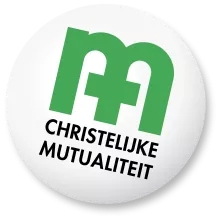Third-party payment scheme
Dentists can apply the third-party payment scheme for all services.

Since January 2022, all healthcare providers can apply the third-party payment scheme for all services, regardless of the patient's status or age.
The third-party payment arrangement means that the healthcare provider or care institution receives reimbursement for the health and disability insurance directly from CM. The patient only pays any co-payments .
This arrangement makes care more accessible to everyone. People who are temporarily in a vulnerable situation or have a low income can use it.
When are you required to apply the scheme?
You are obliged to apply the third-party payment scheme for dental care:
- if your patient is hospitalized;
- for services from the section 'Dental care for cancer patients or anodontia'.
When is the scheme not recommended?
If your patient is not in compliance , it is better not to apply the third-party payment scheme, regardless of the patient's situation.
Request cash payment and advise your patient to make arrangements with CM. If you invoice via third party payment, you will not receive a refund .
You can consult your patient's insurability via your software package or the MyCareNet portal.
How can you check whether your patient is entitled to the third-party payment scheme?
There are two ways to know whether your patient is entitled to a third-party payment arrangement:
- The easiest way to know whether your patient is entitled to the third-party payment scheme is to check his insurability online via a recognized software package or MyCareNet. The fastest way to do this is to read your patient's eID. You can also enter the national register number manually. You can find this number on the eID, or for children under 12 years old on the KidsID or the ISI+ card. The message you receive from MyCareNet states whether application of the third-party payment scheme is possible. However, it does not imply a payment obligation .
- You can also check via the electronic consultation rates (eTar) whether or not the third-party payment arrangement is possible. You will receive a payment obligation if you subsequently invoice electronically.
- You can check whether your patient has the increased reimbursement via the health insurance fund sticker. In this case, the owner code ends with '1': xx1/xx1. Always check the patient's identity and keep in mind that the information on the sticker may be out of date .
- If the status cannot be determined on the basis of the sticker, you must ask your patient for proof of CM . If in doubt, you can contact CM by telephone .
How can you consult rates?
The rates (eTar) can be consulted in two ways:
- via a recognized software package;
- via the MyCareNet portal.
Based on the CM data and that you provide (e.g. nomenclature codes), you will receive the following information:
- patient insurability (automatically checked in many software packages);
- is your patient entitled to the third-party payment scheme?;
- the rate that you can invoice per service (eTar);
- a payment obligation provided that the nomenclature rules are respected (e.g. renewal period, prohibited cumuls) and you invoice electronically. CM will check these rules when it checks your invoicing.
How can you invoice CM?
There are two options for invoicing CM:
If your electronic invoicing is accepted, you will first receive a payment file and then the payment . This will be carried out a maximum of fifteen days after receipt of your shipment. The following factors also play a role: priority rules (receipt date of shipments, statutory payment terms) and the provision of funds by the Riziv.
As from September 2025, eFact will be required when using third-party payment.
What are the advantages?
- Electronic invoicing is simpler and faster than the paper procedure.
- The payment term is a maximum of fifteen days instead of thirty days.
- Your invoicing will be processed without sending any papers (e.g. summary invoice, certificates, supporting documents).
- For patients without increased compensation, the application of the third-party payment scheme is justified via your software .
As a dentist, you can still invoice your benefits in kind under the third-party payment scheme via the paper circuit. You can also use the e-consultation rates (eTar) to prepare the invoice correctly .
What should you do?
Deliver your Unique Contact Point (UCP) by post or via the CM mailboxes (attn. accounting department):
- per patient: certificates for assistance provided with a health insurance fund sticker (or patient's name and national register number);
- two copies of a compilation list stating:
- your details (surname, first name, Riziv number and KBO number);
- the details of the patients involved (surname, first name, national register number);
- per certificate: amount charged to CM, amount charged to the patient and total amount charged to CM.
You can choose the order of the certificates on the summary list yourself . But the certificates must be added to the summary list in the same order .
Sorting based on the connection number is no longer necessary. You can send all certificates of all CM members to your UCP in the same shipment .
Important:
- If necessary, you will receive an overview from CM with comments and/or corrections .
- Payment is made within two months, starting from the end of the month of receipt of the certificates and the summary statement.
Where can you go with questions and problems?
Contact the CM team in your region for questions and support.
If you have questions about your software package , please contact your software supplier directly.
